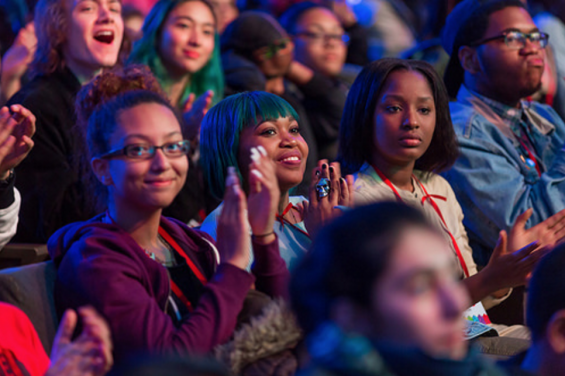
The future is going to get weird. Can education keep up?
The space archaeologist is talking about future careers with a couple of high school students near the animation workshop. A few strides away, teenagers swarm around the glowing purple light of a food computer. Other teens try on virtual reality headsets or eye some killer red 3D-printed high heels. Teenagers are legion today at the 560,000-square-foot Brooklyn Museum. There are middle and high school students everywhere. (Also a few Muppets.) Imagine a petting zoo of ideas about the world in 2035. Now imagine that it’s crammed with students talking to scientists, explorers, and artists about this year’s theme, “Made in the Future.” Got it?

Welcome to TEDYouth 2015. For the 400 students whose application videos were given the nod, today is a chance to talk to potential new heroes and explore the latest bling in science, technology, engineering, art and math. The idea is to create a day when every student can release their inner nerd. Now in its fifth year, TEDYouth is an annual conference for students organized by TED’s education initiative, TED-Ed. At this gathering, curiosity isn’t just a Mars rover — it’s a cardinal virtue that connects every student and teacher in the room. If the mission of TED-Ed is to amplify the ideas of students and teachers, then this event is the prom.
Students respond to “In 2035, I’m going to…”
Alas, not every student can attend TEDYouth in person. But they can watch all 25-plus talks and performances online, for free, as they happen. They can also use the hashtag #TEDYouth to respond to student-centered creative challenges from the staff. One writing prompt — “In 2035, I’m going to…” — asks teens to share their own dreams for the future. Here are some of my favorite responses from students:
In 2035, I’m going to… be a creator.
In 2035, I’m going to… be on Mars.
In 2035, I’m going to… invent something that will make the world a better place.
In 2035, I’m going to… be the first openly homosexual, African-American male on the United States Supreme Court.
In 2035, I’m going to… design games.
In 2035, I’m going to… find a cure for cancer.
In 2035, I’m going to… be playing virtual reality Minecraft when not making aircraft. The two may overlap.
What will matter in the future?
What will people make in 20 years? What types of careers will emerge or cease to exist? This may not be a long conference — this year it runs from just 11 am to 6 pm ET on a Saturday — but that doesn’t keep it from grappling with the big questions. The day is divided into five portions for students: three sessions full of short talks, plus a lunch break and an activity break. The breaks give students a chance to tinker with hands-on learning projects, explore new tech, and interact with their favorite speakers.
Each speaker reveals a different insight, piece of inspiration, or pithy quote. Some of my favorite speakers today are inventor Raymond Wang, poet Brandon Allen, musicians Nicole Paris and Ed Cage, and Mick Ebeling of the Not Impossible Foundation.
“We have barely scratched the surface of what we know about the past. Everywhere we look, we find new settlements, new temples, even potential pyramids,” says Sarah Parcak, a space archaeologist and modern-day Indiana Jones who wants you to understand how blood antiquities fund ISIS.
Where we’re going, we don’t need roads
AstroTurf, plastic dinosaurs, and gemstones: All set. Fabric, boas, and streamers? Check. But other props are needed for today’s stop-motion animation workshop. For animators, today is both a meaningful event and agleeful excuse to experiment with a difficult yet adored animation technique called pixilation. To make it work, they’ll need humans willing to be actors in a life-size stop-motion animation video. They’ll also need to borrow some life-size animation props for these humans, such as staff Halloween costumes that relate to transportation and can fit into “a street scene in the future,” the chosen animation theme. Below is a short list of props that animators were seeking before the event:
-Pilot hat/goggles (like this)
-A very long scarf (like this)
-A cape (think superhero, not vampire)
-An all-wood broom (like this)
-A space suit
-A jetpack? Or, like, a super-cool silver backpack?
All day, students have been dropping by the animation station, and then rolling slowly out of the picture, frame by frame, across a blue backdrop sky. At the end of the day, everyone watches the final animation. Here it is.
What ideas will students carry with them? Which seeds will grow into flowers or monsters? As always, there are more questions than answers. The conference is over, but the future of education is still being built.
This article first appeared on Medium’s education blog, Bright.
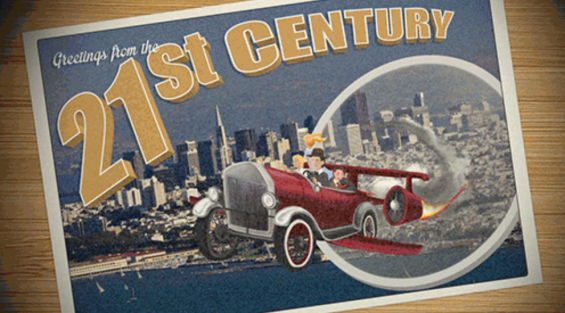
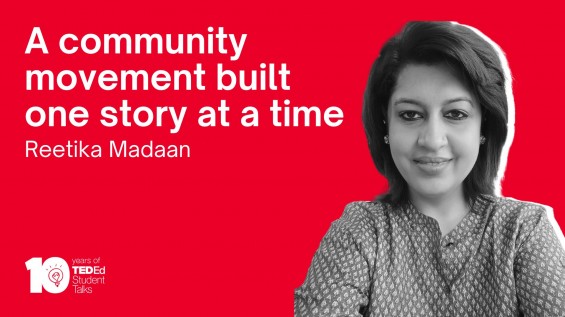
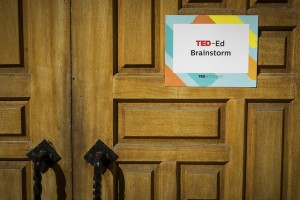
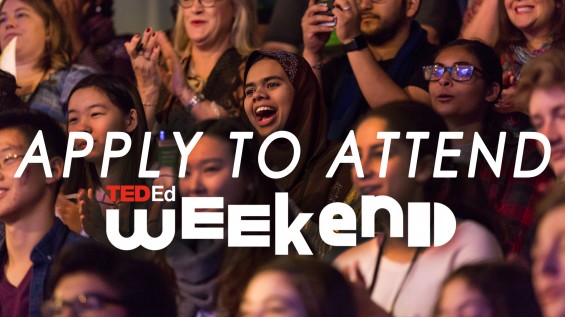
i believe day by day this world gonn be better
1. Will so-called “life-long-learners” EVER get the opportunity to acquire college credit towards a degree?
2. Why is “EDX.com so hard/difficult to ‘get-in-to’? I’ve repeatedly tried and failed to “get-into”/study for courses, ..and all I get/receive replies that I “am-already” registered and then, afterwards, NOTHING: Is this a scam for US accused of being so-called over-educated?